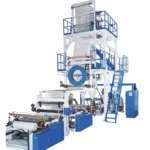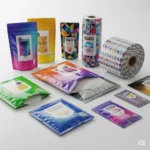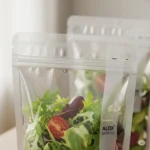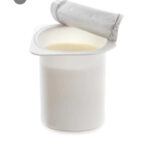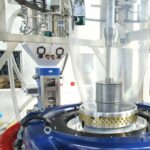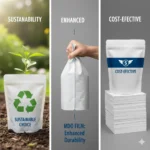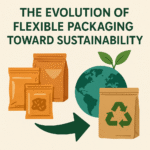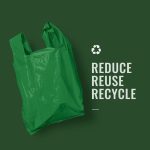Discover eco-friendly and sustainable biodegradable flexible packaging solutions tailored for local food startups, helping reduce waste while enhancing product appeal and environmental responsibility.
Why Biodegradable Flexible Packaging Matters for Food Startups
Flexible packaging—think pouches, sachets, and wraps—is lightweight, versatile, and cost-effective, making it ideal for startups with tight budgets. Unlike rigid containers, flexible packaging maximizes shelf space, reduces shipping costs, and offers ample surface area for vibrant branding. But traditional plastic-based flexible packaging often ends up in landfills or oceans, contributing to environmental harm. Biodegradable alternatives, on the other hand, break down naturally, leaving minimal ecological footprints.
For local food startups, adopting biodegradable flexible packaging isn’t just about meeting consumer demand for greener products; it’s about building trust and loyalty. A 2024 survey by Nielsen found that 73% of global consumers are willing to pay more for sustainable packaging, and this trend is especially pronounced among younger demographics like Millennials and Gen Z, who dominate local food markets. By choosing biodegradable options, startups can differentiate themselves in a competitive landscape while contributing to a circular economy
Top Biodegradable Flexible Packaging Materials for Food Startups
Selecting the right biodegradable material is critical for balancing product protection, shelf life, and environmental impact. Below are some of the most promising options for local food startups, each with unique properties suited to different food products.
1. Polylactic Acid (PLA)-Based Films
Polylactic acid (PLA) is a bioplastic derived from renewable resources like corn starch or sugarcane. PLA films are transparent, printable, and offer excellent barrier properties for dry or low-moisture foods like snacks, grains, or baked goods.
- Pros: Fully compostable in industrial facilities, renewable sourcing, and visually appealing for branding.
- Cons: Limited barrier properties for high-moisture or oily foods; requires industrial composting infrastructure, which may not be available in all regions.
- Best for: Granola, nuts, dried fruits, or coffee startups looking for a premium, eco-friendly look.
2. Cellulose-Based Films
Cellulose films, often marketed as “cellophane” (though distinct from petroleum-based cellophane), are made from plant fibers like wood pulp. These films are biodegradable, compostable, and offer good oxygen barriers, making them suitable for fresh produce or bakery items.
- Pros: Home-compostable, breathable (ideal for preventing condensation in fresh produce), and customizable for thickness.
- Cons: Lower tensile strength compared to plastics, which may limit use for heavy or sharp-edged products.
- Best for: Artisanal breads, fresh herbs, or vegetable startups needing breathable packaging.
3. Starch-Based Blends
Starch-based films, often blended with other biopolymers, are gaining traction for their affordability and versatility. These materials can be tailored to provide moisture resistance, making them suitable for semi-perishable goods like sauces or condiments.
- Pros: Cost-competitive, biodegradable in soil or compost, and customizable for specific food types.
- Cons: May require additives to enhance durability, which can complicate composting certifications.
- Best for: Local jam, sauce, or condiment producers seeking budget-friendly options.
4. Polyhydroxyalkanoates (PHA)
PHA is a family of bioplastics produced by microbial fermentation of organic matter. PHA films are highly biodegradable, even in marine environments, and offer robust barriers against moisture and oxygen.
- Pros: Biodegrades in diverse environments (soil, water, compost), excellent barrier properties, and suitable for frozen or perishable goods.
- Cons: Higher production costs compared to PLA or starch-based options.
- Best for: Premium startups offering frozen meals, dairy, or meat products.
Practical Considerations for Food Startups
While biodegradable flexible packaging offers exciting possibilities, startups must navigate several practical factors to ensure success. Here’s what to keep in mind:
1. Product Compatibility
Not all biodegradable materials are created equal. For example, oily foods like nut butters require robust moisture barriers, making PHA or coated PLA a better choice than cellulose. Conduct thorough testing to ensure your packaging maintains product freshness and safety throughout its shelf life.
2. Regulatory Compliance
Food packaging must comply with local regulations, such as FDA or EU food contact material standards. Ensure your chosen biodegradable material is certified for direct food contact and meets composting standards (e.g., ASTM D6400 or EN 13432). Clear labeling, like “Industrially Compostable” or “Home Compostable,” helps avoid consumer confusion.
3. Scalability and Cost
While biodegradable materials are often pricier than conventional plastics, bulk purchasing or partnering with local suppliers can reduce costs. Startups should also explore government grants or sustainability certifications that offset expenses. As demand grows, economies of scale are driving down prices for materials like PLA and starch blends.
4. Consumer Education
Biodegradable packaging requires proper disposal to maximize its environmental benefits. Educate your customers through clear on-pack instructions or social media campaigns. For instance, explain whether your PLA pouch needs industrial composting or if your cellulose wrap can go in a backyard compost bin.
Real-World Success Stories
Local food startups across the globe are already leveraging biodegradable flexible packaging to great effect. Take GreenBite Snacks, a California-based startup producing organic trail mixes. By switching to PLA-based stand-up pouches, they reduced their packaging carbon footprint by 40% and saw a 25% sales boost due to eco-conscious branding. Similarly, FreshFields Farm, a UK-based vegetable cooperative, adopted cellulose-based wraps for their greens, extending shelf life by 10 days while earning praise from sustainability-focused customers.
How to Get Started
Ready to embrace biodegradable flexible packaging for your food startup? Follow these steps:
- Assess Your Needs: Identify your product’s barrier requirements, shelf-life expectations, and target market preferences.
- Research Suppliers: Look for reputable suppliers offering certified biodegradable materials. Companies like NatureFlex (cellulose) or BioBag (PLA and starch blends) are good starting points.
- Prototype and Test: Work with a packaging engineer to develop prototypes and conduct shelf-life tests. Adjust material thickness or coatings as needed.
- Brand Strategically: Use your packaging’s eco-credentials to tell a compelling story. Highlight certifications like “Compostable” or “Made from Renewable Resources” on your pouches.
- Engage Your Community: Share your sustainability journey with customers through social media, newsletters, or in-store displays to build loyalty.
The Future of Biodegradable Packaging for Startups
As technology advances, the biodegradable flexible packaging landscape is evolving rapidly. Innovations like edible coatings, bio-based nanomaterials, and improved composting infrastructure are making these solutions more accessible and effective. For local food startups, staying ahead of the curve means not only adopting these materials but also fostering a brand identity rooted in sustainability.
By choosing biodegradable flexible packaging, you’re not just packaging food—you’re packaging a promise to your customers and the planet. With the right materials and strategy, your startup can deliver fresh, delicious products while paving the way for a greener future.

